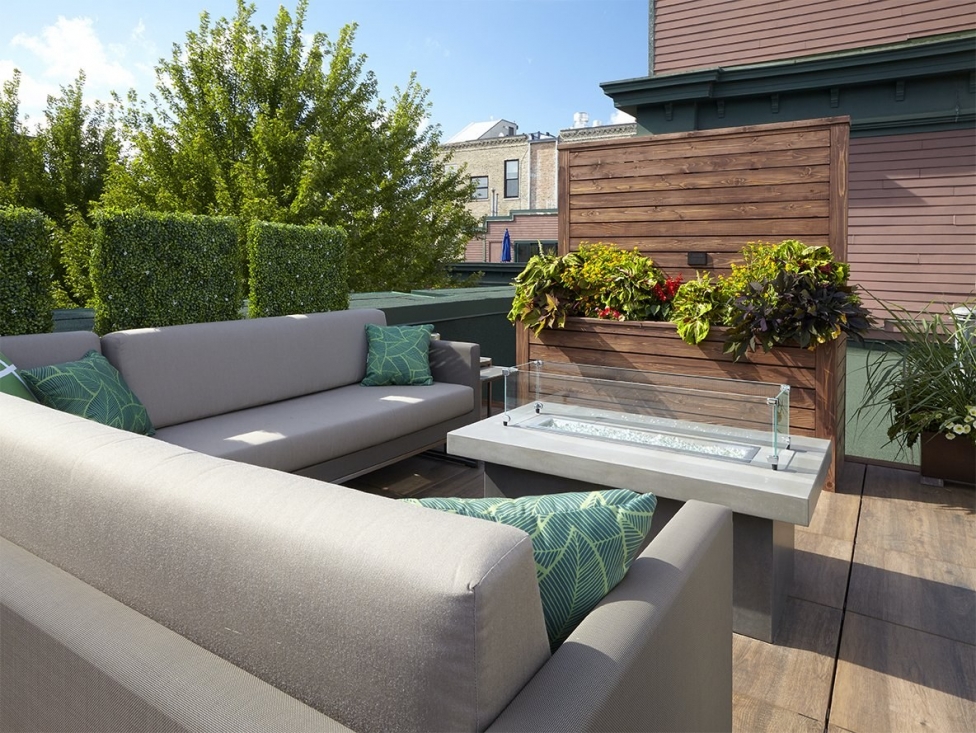
How to Install a New Gas Fire Feature Safely
Where Should I Install My Gas Fire Feature?
Many people think they can place a natural gas fire pit anywhere, but some helpful pointers can keep your home safer. Unless your patio is built on concrete, you'll want to put your gas fire pit someplace where it won't be too close to adjacent walls or buildings. Fire codes often mandate that a fire pit be no closer than 5 feet from any structure. To ensure safety, you'll want to have a fire extinguisher on hand and know how to operate it.
When bringing a new fire feature home for the first time, take a moment to consider the points below:
- Make sure there are no flammable materials or anything that might catch fire in the vicinity. Remove all wicker patio furniture, cleaning solutions, brooms, leaves, and other items from the patio.
- Keep an eye out for low-hanging branches or drooping power lines overhead, and place the pit clear of them.
- Only use an outdoor fire pit outdoors. It's dangerous to use one inside, and carbon monoxide poisoning is a risk.
- If you want to place a pit on your wooden deck, make sure it's a pedestal-style pit with feet that allow adequate heat ventilation. Even if the fire pit is a pedestal design, consider placing a nonflammable surface below it if it's on a wood deck.
Why Should I Be Concerned About BTUs?
British Thermal Units, or BTUs, are a measure of how much energy a fire can produce. The fire's heat output depends on how many BTUs are produced by the fire pit. A fire pit with lower BTUs is safer because the flame will be smaller and less intense, making it less likely to scorch or ignite combustible surfaces.
You probably won't be thinking about BTUs when you're enjoying a fire, but you certainly might if it's a cold night and the fire seems to be going out. If your fire feature has low BTUs, refueling it more often is necessary, which can be both annoying and time-consuming. You'll want to buy a fire feature that has enough BTU output for the kind of fire you want to build.
Firegear's Sanctuary Series of fire furnishings output up to 65,000 BTUs to generate plenty of heat on a cold night and produce the most stunning flame presentation over any rival appliance.
Is Your Backyard Fire Feature Adequately Protected?
Inspect and Clean Regularly
Although gas burns cleaner than wood, you'll still need to inspect the burner regularly and remove anything that might be obstructing it. If the burner is filthy, use a soft brush to clean it. If you see a debris buildup around the fire pit, wipe down and sweep up the area to keep it clean.
Let's say someone bumps into your fire feature, or it gets bumped accidentally during cleaning. A fire safety professional will tell you that the fire feature should be secured into position so that accidents like this are less likely to happen.
Keep it Covered When Not in Use
When not in use, the pit should stay covered. Spiders and bugs can find a way in and end up clogging your burner. Rainwater can destroy porous ceramic logs that sit atop the pit. Keep the fire feature covered whenever possible.
A fire feature cover is a must-have accessory for your fire pit. Not only does it protect against the elements, but it also provides an aesthetically pleasing means of covering your fire pit when not in use. Designed to either sit on top of or around your fire pit, these covers are multipurpose fire pit accessories useful for fire pit maintenance, fire safety, and fire pit style.
What Are Some Safety Recommendations For Installing An Outdoor Gas Fire Pit?
Always start with the manufacturer's instructions for a fire pit installation. You should install the fire feature according to local fire codes and county or city ordinances about fire pits. Also, check with your homeowner's association before you install a fire pit too, as many have additional requirements that apply to fire features.
Other safety recommendations are:
- When a gas fire pit is lit, don't leave it unsupervised.
- Keep youngsters and pets at a safe distance from the pit.
- Unless you have a pit specifically designed for cooking, don't use it for cooking.
- Don't line a pit with tin foil or other household items.
- Make sure nothing goes into the fire pit that the manufacturer hasn't authorized. Fire feature approved fire media includes lava rocks, fire glass, and ceramic or concrete logs.
It's Time to Enjoy Your New Fire Feature
With these guidelines in place for safe installation and usage of a new fire pit, outdoor enjoyment is just around the corner. Whether it's a cold night or just a fun evening with friends, fire features are a fantastic addition to any backyard or patio.
For more fire safety tips and fire feature installation guidelines, visit firegearonline.com today! If you have questions about our fire furnishings, accessories, or installation, our team of professionals is happy to offer their advice.